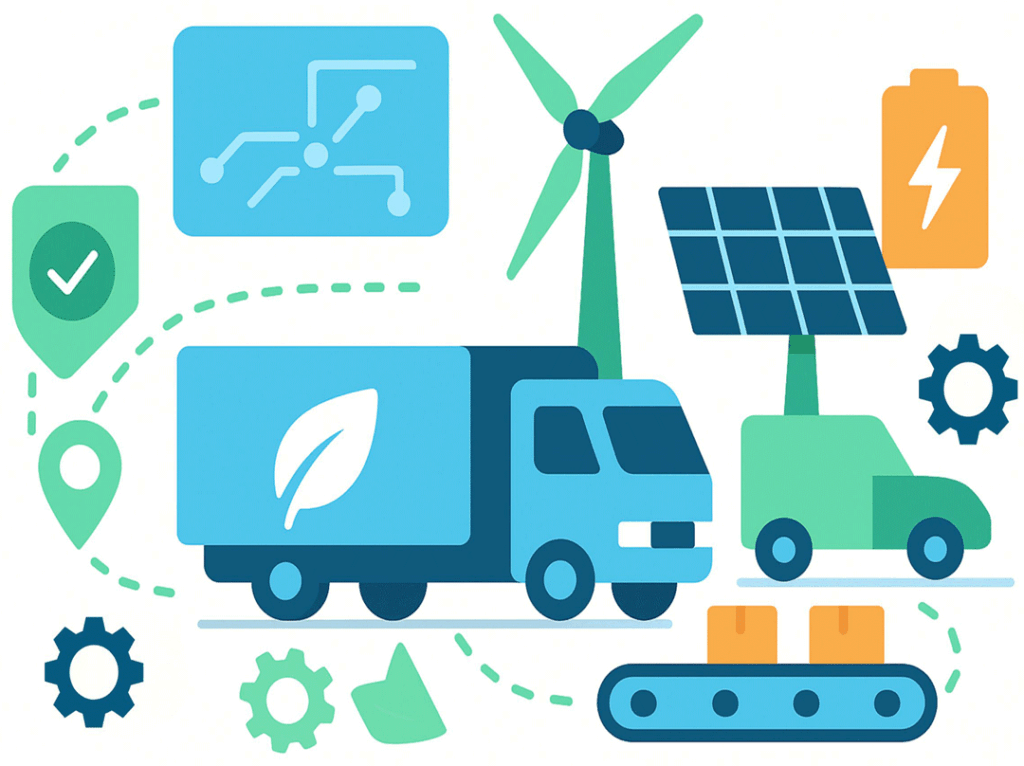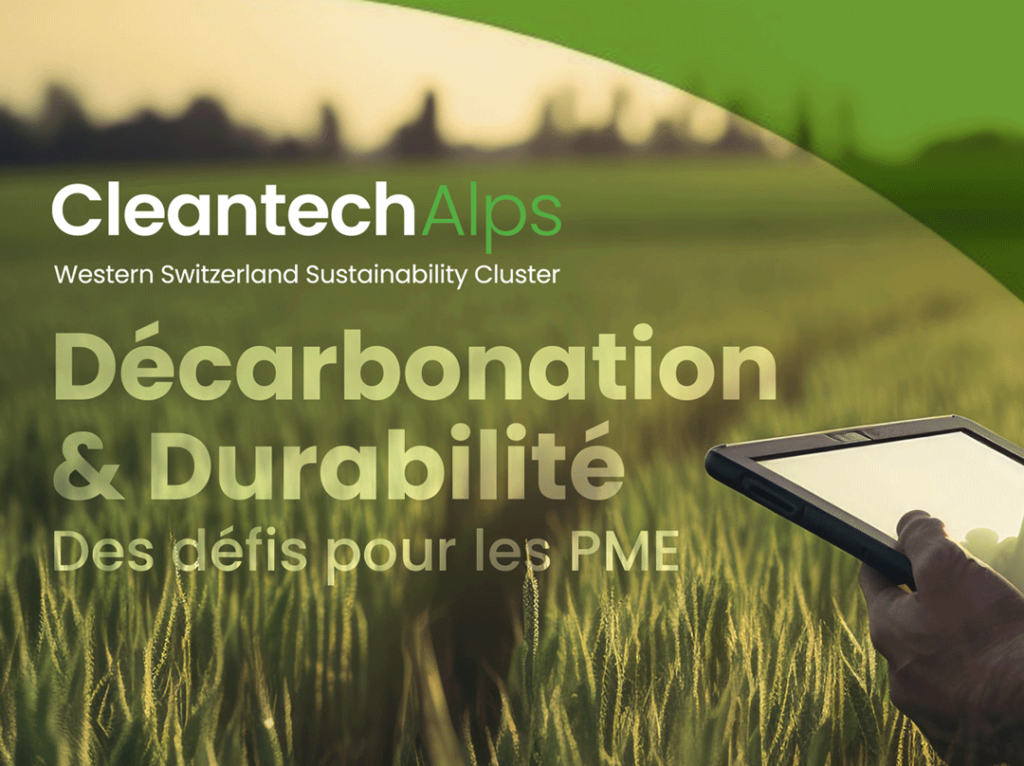A "Green by IT" workshop to help organizations reduce their environmental impact
Green by IT: enormous, under-exploited potential
Climate change is one of society's major concerns today. Researchers and the majority of the population recognize that there is an urgent need to act to reduce the impact of human activities on the environment. Although everyone and every structure is involved in and responsible for reducing the ecological footprint, it is clear that companies have a strategic role to play and could make an essential contribution [1], especially sincein Switzerland, economic activities are responsible for 67% of energy consumption [2].
In this context, Green by IT, sometimes also referred to as IT for Green or Green IS, appears to be an important lever enabling organizations to reduce their environmental footprint. This concept, which is not yet widespread, is potentially more impactful than Green IT, which consists of reducing the energy consumption of information technology (IT). Green by IT aims to implement software solutions - also known as information systems (IS) - with the aim of improving and creating new practices within the company, which will then enable a reduction in the company's overall impact on the environment [3]. The untapped potential is significant: while IT accounts for around 2% of a company's footprint, Green by IT can help reduce the remaining 98% [4]. According to CNRS scientists, the implementation of IS should enable companies to save at least 10 times their own impact on the environment by 2030 [5]. Green by IT, which complements Green IT, thus offers a broader range of actions that go beyond the usual IT vision.
What are the difficulties holding organizations back?
Previous studies have shown that companies are not sufficiently committed to sustainable development, and are not taking enough action [6]. What are the reasons for this?
The first reason for this is the lack of information on the benefits of footprint reduction actions. Indeed, business leaders are not yet sufficiently aware that being "green" will increasingly provide a competitive advantage and often a return on investment (ROI), despite the preconception that environmental projects represent loss-making expenditure. The second reason is the lack of practical tools and methods available to tackle this issue. Indeed, there is a real need for effective tools that help and guide companies to implement concrete solutions, and give them confidence in the actions they undertake [1].
A solution that raises awareness...
Faced with this situation, researchers at the Arc School of Management set out to identify the best options for meeting these two needs, i.e. to bring this awareness to organizations, and to offer them effective tools to guide them towards concrete solutions. Through a project funded by the HES-SO, they built a solution to meet these needs.
The solution we have developed is a method that can be deployed in any type of organization, using a completeworkshop including a collaborative serious game phase. Unlike conventional games, serious games are not just for entertainment purposes, but also have a "serious" dimension, whether communicative, informative or educational. In the case of the serious game developed, the aim is to make employees aware of the actions a company can take to reduce its environmental footprint, as well as the ecological and financial benefits these actions can bring. In concrete terms, the participants, grouped around a game board, will have to agree on the best actions to take from a panel of "action" cards at their disposal. Some of these cards are of the Green by IT type, creating awareness of the opportunities offered by digitalization.

The workshop, which lasts around half a day, is divided into several distinct phases, immersing participants in play, participative creativity and the consolidation of acquired knowledge and elements produced. At the end of the course, participants will have sharpened their knowledge of the environmental impact of organizations, and will have understood the concept and little-known possibilities of Green by IT.
... and which enables the emergence of concrete actions
In addition to raising awareness, the workshop aims to create innovative solutions specific to the context of the organization in which it takes place. Using the materials from the game played previously, participants are encouraged to use various techniques to come up with solutions that will enable their organization to reduce its environmental impact. A phase of consolidation and evaluation of the ideas created then enables the most realistic and relevant to be retained.
Participants come away with a set of prioritized, innovative Green by IT-type actions or projects that are relevant to their company. It is then up to employees to put these actions into practice.
Rigorous methodology
The serious game - the central tool used during the workshop - benefited from a particularly rigorous design methodology. This methodology integrates the results of scientific studies directly into the elements of the game: firstly, the areas of environmental impact were established on the basis of studies published by the ADEME agency and integrated into the foundations of the game; secondly, the game's mechanisms were evaluated and selected on the basis of a scientific survey of learning mechanisms [7] to guarantee an effective learning process during its development; finally, the drivers for the adoption of Green by IT were also analyzed and integrated into the game, in order to increase the likelihood of adoption of the ideas presented by the participants.

In addition to being designed on the basis of these scientific elements, the game was built in collaboration with "Entrée de jeu", a company specialized in game design and made up of experts in serious games. This methodology has resulted in the first game for organizations to raise awareness of the possibilities of Green by IT actions.
In order to achieve a successful workshop model, both the serious game and the entire workshop were tested and improved several times. This was done according to an outline broken down into different phases, which enabled the inclusion of different profiles of people ranging from the young to the not-so-young, from gaming novices to real pro-gamer experts. A final phase took place in a real organizational context and proved the balance and playability of the game, as well as the workshop 's potential to raise awareness and create ideas and projects relevant to the organization.
Encouraging initial results
To measure the real contribution of the workshop, a questionnaire had to be completed by each participant, both before and after the event.
The results showed an increase in awareness, both of the sustainability aspect and of the opportunities that Green by IT can offer. All participants stated that actions in favor of the environment could be compatible with their company's financial expectations. What's more, their intention to promote such actions within their company was very real and could be measured. Finally, it was clear that the workshop did much more than just raise awareness, as the comments received showed that the proposed method helped to generate ideas for relevant actions and, ultimately, to initiate genuine Green by IT projects.
Outlook
Now that the method is in its final form, the authors are keen to promote it to as many companies and organizations as possible. "It's now a question of deploying the intended effects, i.e. offering help to organizations, which will make it possible to use the opportunities of digital technology to reduce environmental impact where this is not always envisaged". As such, any organization wishing more information or interested in running this half-day workshop is invited to contact the authors mentioned at the bottom of the article. The workshop can take place with a minimum of 4 people available.
In addition to the creation of this tool, the project, carried out within the HEG Arc, has also brought together new scientific knowledge relating to Green by IT and Green IT. This has led to theopening of a new continuing education course on sustainable IT, the first session of which has just begun.
For further information: https: //www.he-arc.ch/gestion/formation-continue/informatique-durable-point-de-situation-actions-possibles-et-opportunites
References
[1] C. Mio, S. Panfilo, and B. Blundo, "Sustainable development goals and the strategic role of business: A systematic literature review", Business Strategy and the Environment, pp. 1-26, 2020.
[2] Swiss Federal Statistical Office, "Energy and air emissions accounts 2020", 2022. https://www.bfs. admin.ch/news/... (accessed September 29, 2022).
[3] R. T. Watson, M.-C. Boudreau, and A. J. Chen, "Information systems and environmentally sustainable development: energy informatics and new directions for the IS community", MIS quarterly, vol. 34,no. 1, pp. 23-38, 2010.
[4] J. Dedrick, "Green IS: Concepts and issues for information systems research", Communications of the Association for Information Systems, vol. 27,no. 1, pp. 173-184, 2010, doi: 10.17705/1cais.02711.
[5] F. Berthoud, "Numérique et écologie", Annales des Mines - Responsabilité et environnement, vol. N° 87,no3, p. 72-72, 2017.
[6] S. Bonini, S. Gorner, and A. Jones, "How companies manage sustainability", McKinsey, 2010. https://www.mckinsey.com/busin...
[7] S. Arnab et al, "Mapping learning and game mechanics for serious games analysis", British Journal of Educational Technology, vol. 46,no. 2, pp. 391-411, 2015.




